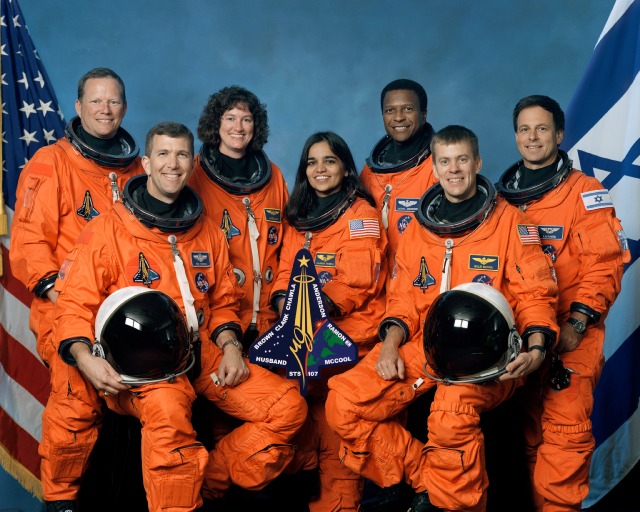Shuttle Explodes on Reentry

From left to right are mission specialist David Brown, commander Rick Husband, mission specialist Laurel Clark, mission specialist Kalpana Chawla, mission specialist Michael Anderson, pilot William McCool, and Israeli payload specialist Ilan Ramon.
On February 1 2003 the space shuttle Columbia disintegrated during reentry. Columbia had completed a successful 16 day science mission. Columbia was doomed from a few moments after launch when a large piesce of foam that insulated the fuel tank broke off and hit the leading edge of the shuttles wing. Killed on the shuttle were Rick D Husband the mission commander, Laurel B Cool the shuttle pilot, and mission specialists, David M Brown, Michael P Anderson, Laurel B Clark, Kalpana Chawal and the Ilan Ramon, the first Israeli astronaut.
On January 16th, 2003 Mission STS-107 with Shuttle Columbia took off from Cape Canaveral. Aboard the shuttle were seven astronauts. 81.7 seconds after take off a large piece foam broke off from the external fuel tank and struck the wing of the shuttle. NASA used simple predictive software to evaluate the possible impact of the strike. The software predicted that the results might be catastrophic. NASA, however, downplayed the potential impact. They refused to request a DOD satellite try to get a high-quality image of the shuttle in flight.
The NASA specialist convinced themselves that it would be ok, and furthermore, if it was not there was nothing that could be done, there were no backup space shuttles available for an emergency mission, and better the crew go about their task and continue to work without worrying about a possible catastrophe. In retrospect that decision is indefensible. If there was indeed a potential problem, then the best minds in the US and the world could have been directed at finding a solution. Furthermore, if there was no solution the astronauts deserved the ability to say goodbye to their families.
At 8:15 EST the Columbia fired its engine to begin to deorbit. At 8:44 Am the Columbia began to enter the atmosphere. As Columbia passed over California, something started going wrong. The first heat tiles began to fall off the Shuttle as it passed over Texas. At 8:59 the last words were heard from the Shuttle crew as the Shuttle began to disintegrate.
 >
>